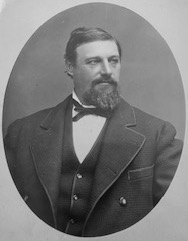
USS Louise No. 2 (SP-1230), sometimes written Louise # 2 and also referred to during her naval career as Louise and as Pilot Boat No. 2, was a United States Navy patrol vessel in commission from 1917 to 1919. The Louise, was a pilot boat from 1900 to 1917. She was a replacement for the pilot boat Columbia, that was washed ashore in 1898. After the World War I the Louise returned to pilot service until 1924 when she was purchased as a yacht. In 1924, the Boston pilot boat Pilot, took the place of the Louise.

The Columbia was a 19th-century pilot boat built C. & R. Poillon shipyard in 1879 for Sandy Hook and New York pilots that owned the Isaac Webb, which was lost off Quonochontaug Beach, Long Island in July 1879. She was run down by the Guion Line steamer SS Alaska in 1883. A second pilot-boat, also named Columbia, was built by Ambrose A. Martin at East Boston in 1894 that had a unique spoon bow and was extremely fast. She was thrown ashore in the great Portland Gale, and remained on the Sand Hills beach in Scituate, Massachusetts for over thirty years as a marine curiosity. The Louise No. 2 replaced the ill-fated Columbia.

The Richard K. Fox, first named Lillie, was a 19th-century pilot boat built in 1876 for Boston Pilots. She was designed by model by Dennison J. Lawlor. She was one of the most graceful and attractive of the Boston pilot-boats and represented a trend toward deep-bodied boats. She was later sold to the New York pilots and renamed Richard K. Fox in honor of the famous sportsman and publisher of the Police Gazette. In the age of steam, she was sold in 1896 to the Marine Hospital Service.

The Sylph was a 19th-century pilot boat first built in 1834, by Whitmore & Holbrook for John Perkins Cushing as a Boston yacht and pilot-boat for merchant and ship owner Robert Bennet Forbes. She won the first recorded American yacht race in 1835. She was a pilot boat in the Boston Harbor in 1836 and 1837 and sold to the New York and Sandy Hook Pilots in October 1837. She was lost in winter of 1857 with all hands during a blizzard off Barnegat, New Jersey. The second Sylph was built in 1865 from a half-model by Dennison J. Lawlor. The third Sylph was built in 1878 at North Weymouth, Massachusetts for Boston Pilots. She was sold out of service in 1901, after 23 years of Boston pilot service.
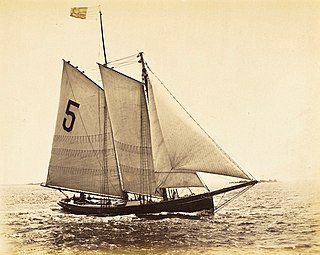
The Hesper was a 19th-century Boston pilot boat built in 1884, designed from a model by Dennison J. Lawlor as a Boston yacht and pilot-boat for merchant and ship owner George W. Lawler. She was known to be the largest pilot boat under the American flag at 104 feet long and the fastest of the Boston fleet. She competed in several first-class sailing races, and in 1886, the Hesper won the silver cup in what was known as the first Fishermen's Race. She was withdrawn from the pilot service and sold in 1901. The Hesper became a wreck on the point off Cape Henlopen in 1919.
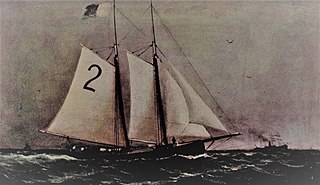
The Eben D. Jordan was a 19th-century Boston pilot boat built in 1883 by Ambrose A. Martin in East Boston for Captain Thomas Cooper. Her namesake was Eben Dyer Jordan, the founder of the Jordan Marsh department stores. In 1892, she was sold to the New York Sandy Hook pilots. She was one of the last of the pilot-boats that were discarded in an age of steam and electricity in 1896.

The Adams was a 19th-century Boston pilot boat, built in 1888 by Moses Adams at Essex, Massachusetts for Captain John H. Jeffries. She was named for Melvin O. Adams, an American attorney and railroad executive. Her design was by yacht designer Edward Burgess, known for his America's Cup defenders. In 1901, she was one of only five pilot-boats left in the Boston fleet. In 1912, she was sold to haul gravel to Boston, then sold again where she landed in the Portuguese immigrant trade. She was sunk by enemy action during World War I.

The Centennial was a 19th-century wood pilot boat built in 1876 by Robert Crosbie and designed by Boston designer Dennison J. Lawlor for New York and New Jersey pilots. She was one of the pilot-boats that survived the Great Blizzard of 1888. By 1898, in the age of steam, she was the last pilot boat left in the fleet; then sold in 1898 to a group in Montego Bay, Jamaica.

The Edward E. Barrett, or Edward E. Bartlett, was a 19th-century two-masted Sandy Hook pilot boat, built by C. & R. Poillon in 1883 and designed by William Townsend. She helped transport New Jersey maritime pilots between inbound or outbound ships coming into the New York Harbor. She was one of the pilot boats that survived the Great Blizzard of 1888. In the age of steam, the Barrett ended her pilot commission and was sold in 1904.

The David Carll was a 19th-century pilot boat, built in 1885 at the David Carll shipyard in City Island, New York. She was named in honor of David Carll, a well-known City Island shipbuilder. The David Carll was considered to be among the fastest schooners in the fleet. She was built to replace the Mary E. Fish that was run down and sank by the schooner Frank Harrington in 1885. She was one of the pilot boats that survived the Great Blizzard of 1888. The David Carll was lost at sea in 1893.
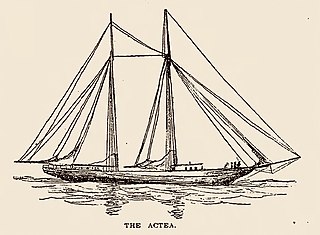
The Actaea, or Actea, was a 19th-century Boston yacht built in 1880 by Weld and David Clark of Kennebunk, Maine for David Sears, Jr., of Montgomery Sears of Boston. She was purchased by a group of New York Sandy Hook Pilots in 1890. She was one of the largest and fastest pilot boats in the fleet. In the age of steam, the Actaea was sold in 1896 to John J. Phelps of the New York Yacht Club and used as a pleasure yacht.
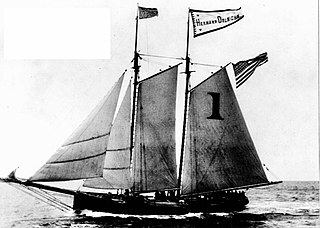
The Hermann Oelrichs was a 19th-century Sandy Hook Pilot boat, built in 1894 by Moses Adams at Essex, Massachusetts for a group of New York Pilots. She helped transport New York City maritime pilots between inbound or outbound ships coming into the New York Harbor. The Herman Oelrichs was said to be the fastest of the New York pilot fleet. She was built to replace the pilot boat Hope, that was wrecked in 1890.

The Friend was a 19th-century pilot boat built by Daniel D. Kelley & Holmes East Boston shipyard in 1848 for Boston pilots. She helped transport Boston maritime pilots between inbound or outbound ships coming into the Boston Harbor. The Friend was one of the last of the low sided, straight sheared schooners built in the 1840s for Boston pilots. The second Boston pilot boat Friend was built in 1887. Her name came from the older Friend that was in the service in the late 1840s. Captain Thomas Cooper sold the Friend to New York pilots in 1893. Cooper replaced the Friend with the pilot-boat Columbia in 1894.
Dennison J. Lawlor, was a 19th-century Canadian-Irish shipbuilder and yacht designer. He apprenticed under shipbuilder Whitmore & Holbrook. Lawlor had his own shipyard, building and designing for 40 years some of the finest yachts, pilot boats, and 150 merchant vessels built from his designs. The most notable were the Hesper, Florence, and D. J. Lawlor. Lawlor died in Chelsea, Massachusetts in 1892.
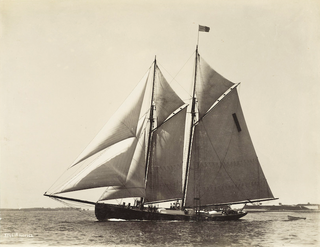
The America, No. 1 was a 19th-century American pilot boat built in 1897 for Captain James H. Reid Sr. of Boston and designed by Boston designer Thomas F. McManus. The Boston America did not resemble her famous namesake, yacht America, rather she was designed with a fishing schooner "Indian header" bow. After serving 21 years in the Boston Pilots' Association, the America was sold to David W. Simpson of Boston in 1918.

John Crossland Fawcett was a 19th-century American Boston harbor pilot. He is best known for being a member of the Boston Pilots' Association for 19 years. He was an owner and pilot on the pilot boats Columbia and Louise. He died by suicide in his cabin on the pilot boat Louise in 1908 off Half Way Rock.

Moses Adams, was a 19th-century prominent Essex shipbuilder. He had his own shipyard and built eighty-five schooners and pilot boats. Adams died in Essex, Massachusetts in 1894.
Ambrose A. Martin, was a 19th-century Boston, Massachusetts yacht and boat shipbuilder. He built the Ambrose A. Martin shipyard in 1882 at Jeffries Point, East Boston, where he built many notable Boston yachts and schooners. Martin died in Boston in 1934.
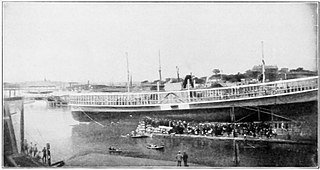
Montgomery & Howard was a 19th-century American shipbuilding company started by Jabez K. Montgomery and A. L. Howard in 1867. The shipyard was on Marginal Street in Chelsea, Massachusetts. Some of the finest boats in the New England cost were designed and built by them. The company stayed in business until 1904. The sidewheel passenger steamer Old Colony was the last vessel that the firm built.

Gracie was a 19th-century Boston pilot boat built in 1869 at the Edward A. Costigan shipyard in Charlestown, Massachusetts. The schooner was used by Boston pilots and was sold to North Carolina pilots in 1881.


